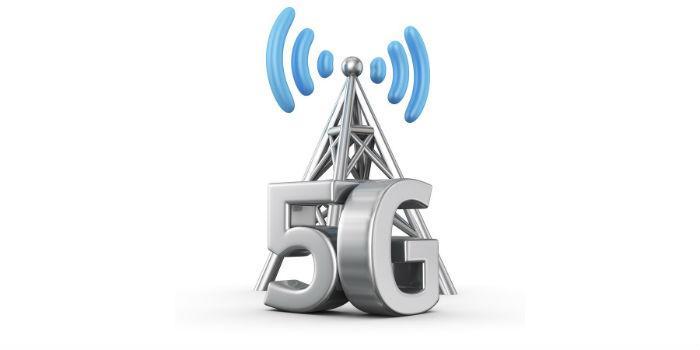 Mexico. In the coming months the telecom industry will begin a long transition to a new generation of mobile data networks called 5G. This change will have profound implications for the development of the connected society and will likely be the first display of the fully connected world envisioned in science fiction books, movies and series.
Mexico. In the coming months the telecom industry will begin a long transition to a new generation of mobile data networks called 5G. This change will have profound implications for the development of the connected society and will likely be the first display of the fully connected world envisioned in science fiction books, movies and series.
What does 5G mean?
Since the 1990s, when the first cellular telecommunications networks appeared, organizations such as the International Telecommunication Union (ITU) and the 3rd Generation Partnership Project (3GPP) created technical standards so that all telecommunications operators could interconnect their networks and evolve in unison.
The technical standards have complicated names such as Advanced Mobile Phone Service (AMPS) or International Mobile Telephone 2000 (IMT-2000), so it was decided to encompass them under a more accessible advertising name: 1G, 2G and 3G. The term 4G encompasses technical standards such as Evolved High Speed Packet Access (HSPA+), Long-Term Evolution (LTE) and Worldwide Interoperability for Microwave Access (WiMAX) that although not the same, offer similar data transmission capabilities and response speed to users.
In 2012, ITU began work to determine the characteristics of telecommunication networks in the following decade, calling such features International Mobile Telecommunication 2020 (IMT-2020) and by 2016 the 3GPP agency began work to create the rules under which fifth-generation networks, called 5G, must operate.
Why will 2019 be important for 5G?
In the summer of 2018, the 3GPP organization announced that the 5G standard was ready and both equipment manufacturers and telecommunications companies around the world could use it for their networks. In fact, at the beginning of the year an experimental 5G network was deployed during the Olympic Games in the South Korean town of Pyeongchang and in mid-December the company AT&T began the deployment of its 5G network in half a dozen cities in the United States of these networks.
Large telecom operators around the world will be looking to ride this wave and next year will be filled with announcements of 5G network rollout around the world. Some terminal equipment companies (smartphones and tablets mainly) have already launched some devices compatible with these networks, although perhaps the boom in the use of these networks by humans will occur when the new generation of Apple devices incorporates compatibility with these networks.
Did you say humans?
Unlike previous generations of cellular networks, 5G networks are intended to be used predominantly by sensors, vehicles, robots, appliances, machinery and all kinds of digital devices that operate without human supervision.
Humans are expected to be a fraction of all users of 5G networks, whose connectivity density goes far beyond the number of devices humans can carry in their purview: the 5G standard is designed to simultaneously connect up to 1 million devices per square kilometer and keep connected objects that move at speeds of up to 500 kilometers per hour.
What do I gain as a consumer with 5G?
In principle, these networks will offer access speeds much higher than those we have today for our mobile devices. The technical documents of the 5G standard establish theoretical download speeds of up to 20 gigabits per second, although they estimate that the actual download speed would be around the order of 100 Megabits per second, which is much higher than the speeds of the 4G networks we use today.
Perhaps more importantly, these networks will offer extremely short response times (latency), of approximately 1 millisecond. This variable is critical for these networks to be truly useful in applications such as remote driving of vehicles and aircraft, where a delay in response could end in a fatal crash or collision. To realize these capabilities, unlike what happens today where a cell phone makes use of a single band of the radio spectrum to communicate with the transmitting antenna, 5G networks are designed for the cell phone or tablet to make use of multiple bands of the radio spectrum simultaneously.
When will I be able to use these new networks?
Unfortunately these networks will need time to have similar coverage as the predecessor networks. To cover a square kilometer of surface with a 3G network, four to five transmitters were enough, while 5G networks will need up to 50 transmitters to cover the same area. That is why it will be necessary to multiply by 10 and perhaps even by 100 the number of transmitters that exist today. As if that were not enough, each transmitter must be connected to fiber optic networks or similar, which will involve massive investments and time for the installation of infrastructure in structures such as ceilings, walls and street furniture.
Financing these telecommunications networks will require a business model different from the traditional one. If a car is a user of the 5G network, will the bill for data consumption be paid by the user? These questions still do not have clear answers and will be key for telecommunications network operators to be encouraged to invest perhaps tens and even hundreds of billions of dollars in their installation. Not for nothing does a consulting firm called Rysavy Research estimate that it won't be until the 2040s when 5G networks reach their full use.

























Leave your comment